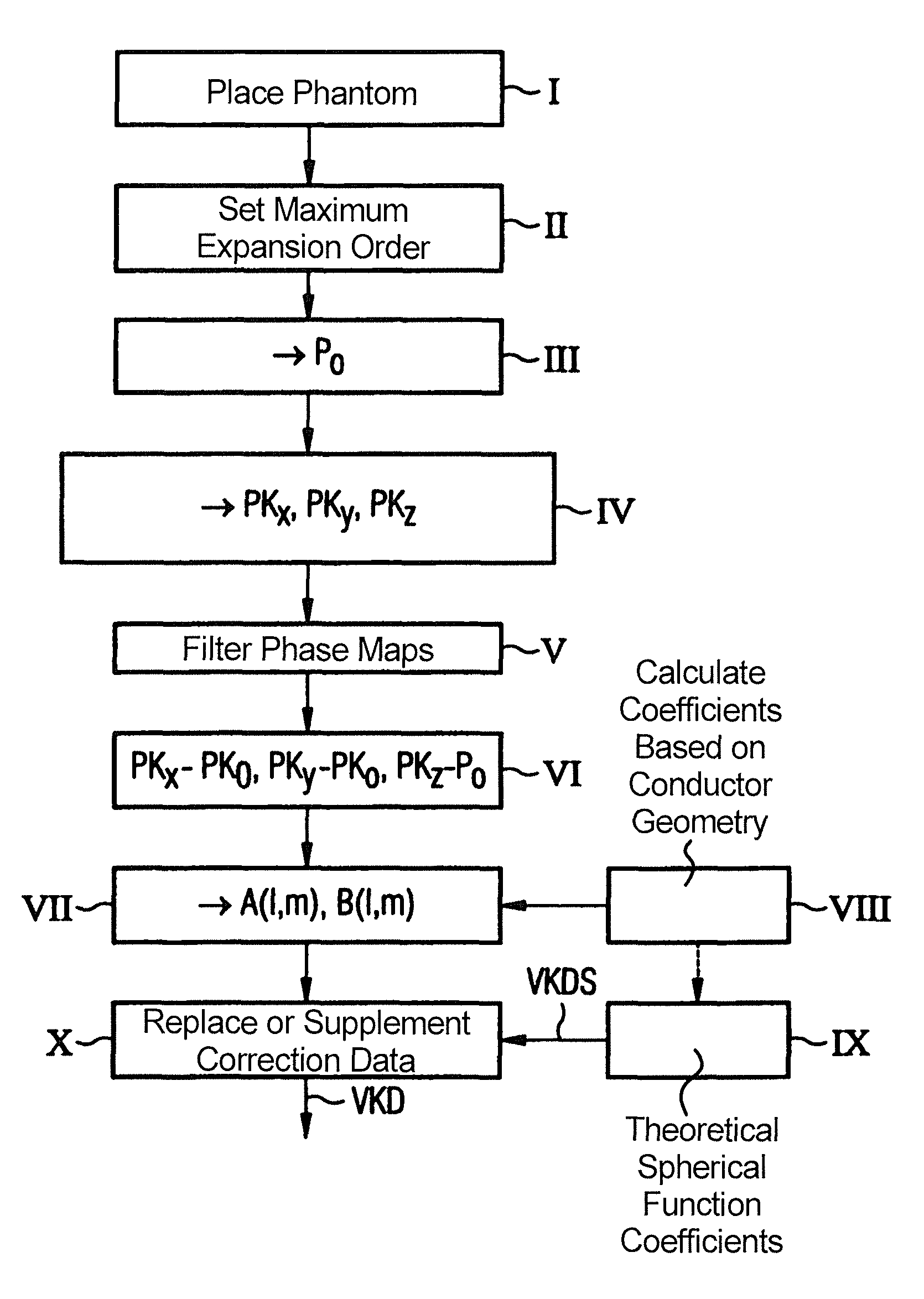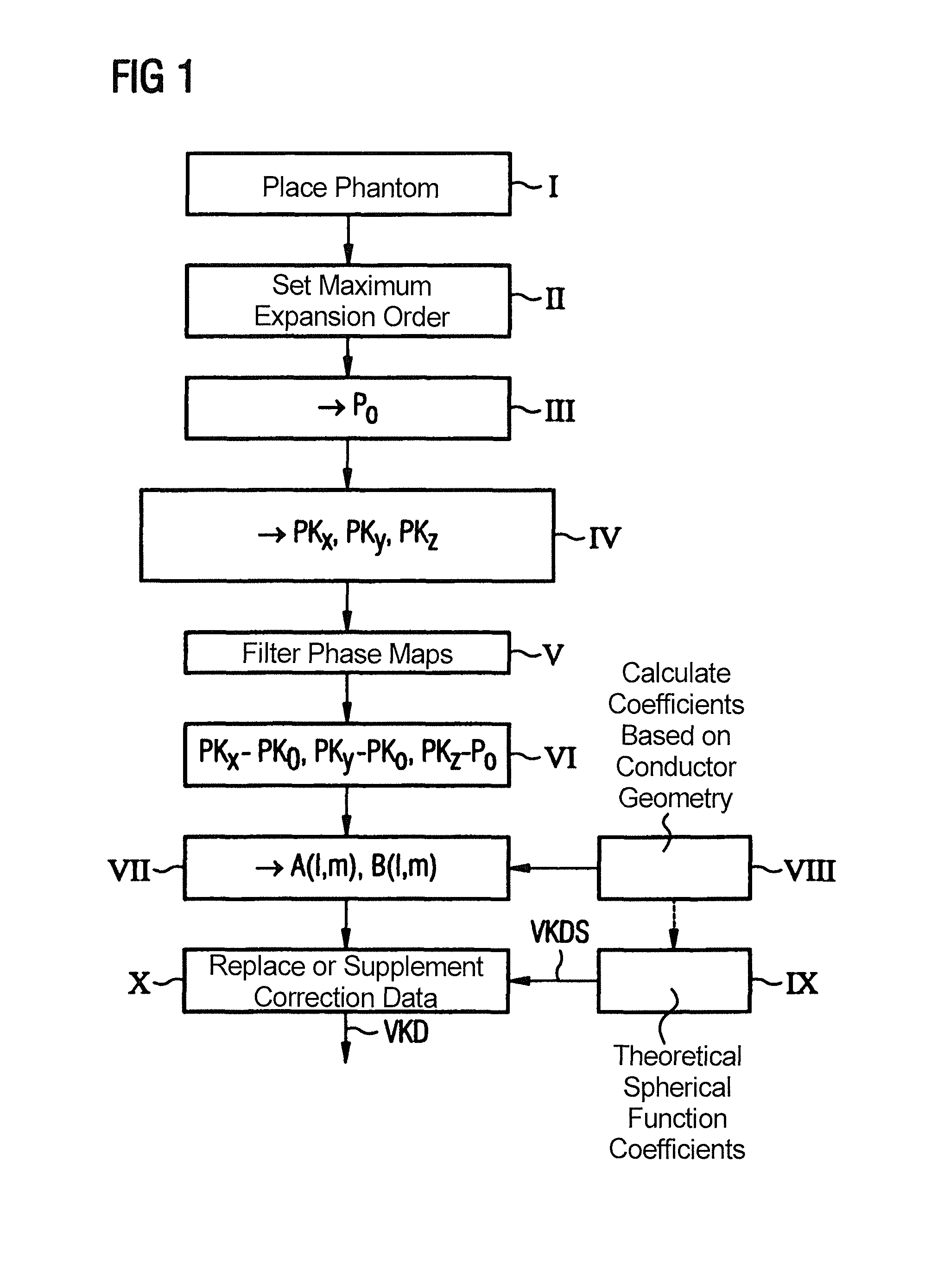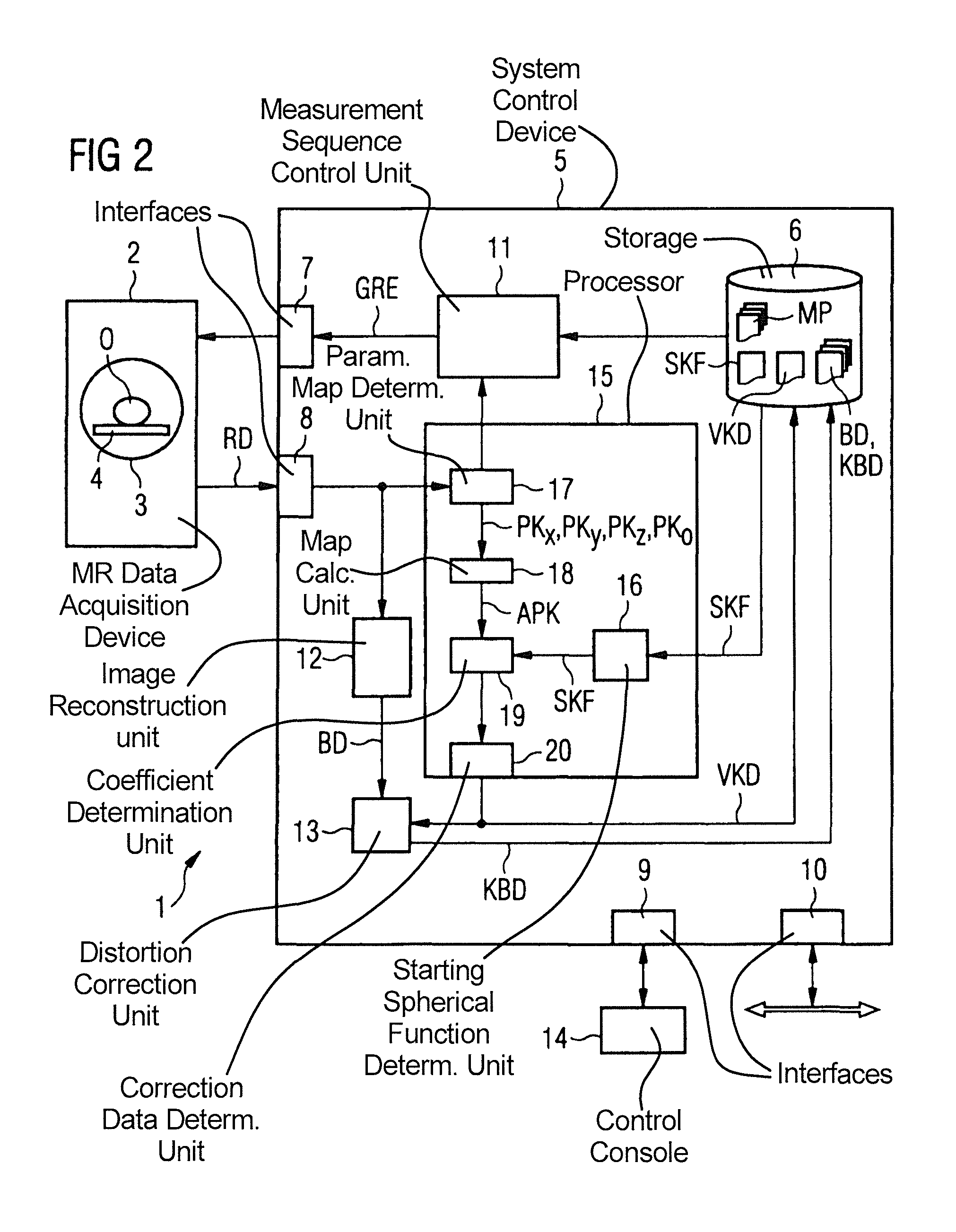Method and device to determine distortion correction data
a distortion correction and data technology, applied in the direction of measurement devices, instruments, character and pattern recognition, etc., can solve the problems of affecting the accuracy of the calculation, the disadvantage of the imaging properties of the magnetic field gradient coil, and the problem of imaging errors (typically called “distortions”) in the imaging volume, so as to achieve the effect of longer calculation time and consequently more accurate calculation
- Summary
- Abstract
- Description
- Claims
- Application Information
AI Technical Summary
Benefits of technology
Problems solved by technology
Method used
Image
Examples
Embodiment Construction
[0043]In the method shown in FIG. 1, all gradient coils are calibrated in one pass in order to then determine the spherical function coefficients and the distortion correction data based on these coefficients. Without limitation of generality, it is assumed that the phase maps already explained above are determined as parameter maps.
[0044]The method initially begins in Step I by positioning that a measurement phantom in the measurement space of the magnetic resonance scanner. This measurement phantom can be, for example, a spherical phantom, an ellipsoidal phantom, a cylindrical phantom or the like. A spherical phantom is advantageously used. The phantom is fashioned in a typical manner, for example is simply filled with water.
[0045]The maximum expansion order can be predetermined by the user in Step II. Moreover, at this point he can additionally also select the matrix size and the imaging volume (field of view=FoV). The matrix size indicates the number of voxels in the FoV, i.e. t...
PUM
 Login to View More
Login to View More Abstract
Description
Claims
Application Information
 Login to View More
Login to View More - R&D
- Intellectual Property
- Life Sciences
- Materials
- Tech Scout
- Unparalleled Data Quality
- Higher Quality Content
- 60% Fewer Hallucinations
Browse by: Latest US Patents, China's latest patents, Technical Efficacy Thesaurus, Application Domain, Technology Topic, Popular Technical Reports.
© 2025 PatSnap. All rights reserved.Legal|Privacy policy|Modern Slavery Act Transparency Statement|Sitemap|About US| Contact US: help@patsnap.com



